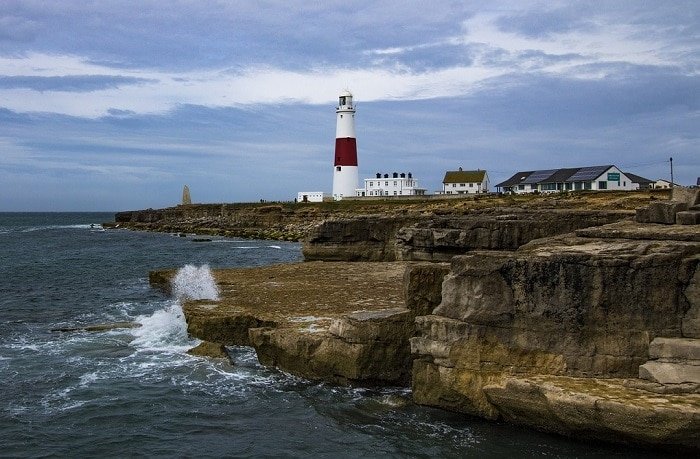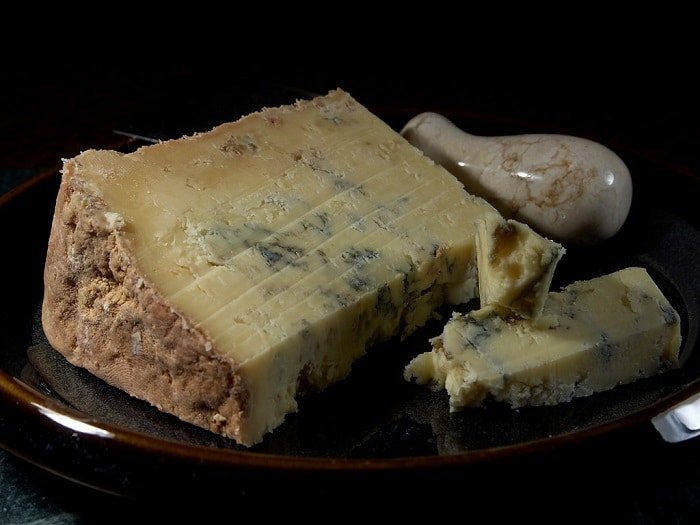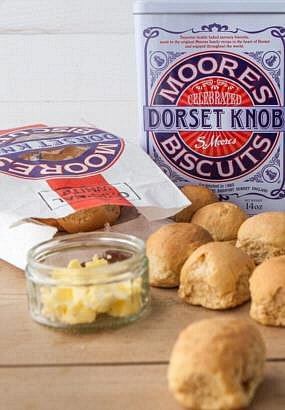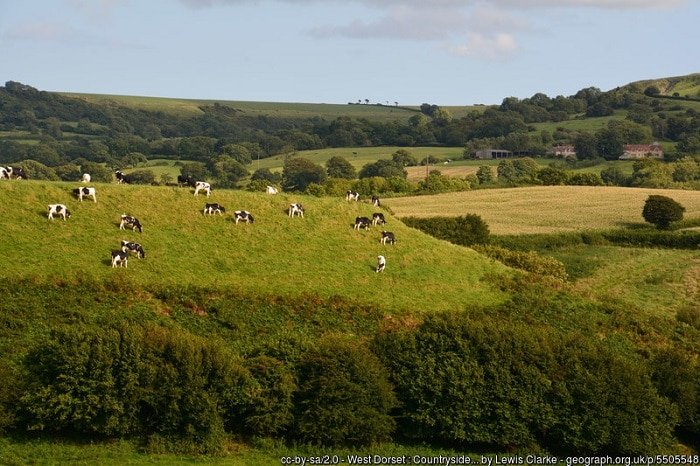
The 1st of June marks Dorset Day. What better way to celebrate than with a spotlight on the county. In this post, we’ll offer a few suggestions for where to go and what to eat in the ancient county that is known for its Jurassic coastline and Portland Bill lighthouse.
Dorset Day
Dorset Day is observed every year on the 1st of June. The day is the feast day of Saint Wite, aka Saint Candida. Little is known about her other than the fact that she was believed to be a local woman. According to local lore, she lived as a hermit but worked to help the community by shining a light to guide the ships at sea. Killed as she defended a local village against Viking raids, Wite’s remains were interred at a the Church of St. Candida and Holy Cross in the village of Whitchurch Canonicorum. The church still contains a shrine to the saint, complete with three holes. Pilgrims believed that if they put diseased limbs into the holes, they would be cured.

Dorset Foods
Dorset is a largely rural county with plenty of grazing pasture and, of course, access to the sea. This makes for a rich variety of local produce, often sold through the region’s many farmer’s markets. Several notable cheeses hail from Dorset.
Dorset Blue Vinny is a hard, crumbly blue cheese, made from cows’ milk near Sturminster Newton. The name is thought to be derived either from an obscure historic term for mouldy or from a regional pronunciation of “veiny”. Reportedly once made “in nearly every farmhouse in Dorset”, production declined during WWII. Luckily, it’s undergone something of a local revival in the last few decades. The cheese has Protected Geographic Status, meaning it can only be made in Dorset. It pairs well with Dorset Knobs (see below).

Dorset Drum was the county’s variation of a cheddar cheese, the name coming from its cylindrical shape. Sadly, the farm that made it stopped production in 2013. A cheese using the same name and encased in black wax can occasionally be found in shops, but experts caution that it is not the same thing.

Don’t expect to find Dorset Knobs anywhere else but in Dorset. And even then, you can often only find them at certain times of the year. These small round bread rolls are so named because of their resemblance to door knobs, some might say both in shape and hardness. Baked three times, they are rather like a rusk in texture. Because they are so hard, many people would soak them in their cup of tea before eating. Renowned novelist Thomas Hardy was apparently quite a fan. According to his maid, Mr. Hardy would “would most enjoy a cup of soup, followed by two boiled eggs. He finished his meal with Dorset knobs and Stilton cheese, both favourites of Mr Hardy, Dorset knobs especially.”
Today, one company makes knobs – Moores Biscuit Manufacturers – and only seasonally. Shrinking demand and the length of time required for preparation means that the company makes them only in January and February, the post-Christmas quiet time. For possibly the ultimate in quirky British food events, head to the Dorset Knob Throwing competition, held in May.
Other county foods include apple cake (apples are a common crop both here and in neighbouring Somerset and Devon) and Portland lamb. You might also want to visit one of Dorset’s gin distilleries. Alternatively, plan to spend a weekend at one of the county’s many food festivals, for example the Dorset Seafood Festival, held in Weymouth every July.
Dorset Countryside
Rural Dorset has featured in a number of British literary classics. Beloved children’s author Enid Blyton frequently holidayed here and her surroundings inspired many of her Famous Five novels. Thomas Hardy was born in Stinsford, and spent most of his life in Dorset, returning after a few unhappy years in London. His fictional Wessex is based on this part of the country.

There are lots of ways to explore the gorgeous countryside. Visit one of the county’s castles, such as Corfe or Lulworth. Take a ride on a steam train with the Swanage Railway. Explore Hardy country in and around Dorchester. Or take a stroll out to the Cerne Abbas Giant, a massive chalk figure of a naked man whose origins remain uncertain to this day. With so much countryside to see and so many outdoor activities, you won’t be bored.
Dorset Coast
Thousands of visitors comes to Dorset’s beaches every year, whether looking for a family-friendly seaside holiday in Bournemouth or Weymouth, or searching for some solitude at Studland Bay.


But Dorset’s coast is also world-famous for another reason. In the early 18th century, a local girl and her father uncovered the skeleton of an ichthyosaur while digging for fossils to sell to tourists. Mary Anning would go on to take over the family’s fossil business and make many more important discoveries. In doing so, she gained a reputation as an expert paleontologist and made important contributions to geology.
The Jurassic Coast is a UNESCO World Heritage Site, noted for its rich collection of fossils and other fascinating geological features, such as Durdle Door. Even if you’re not particularly interested in rocks, the landscape here is quite breathtaking. See it by foot from the beach or rent a kayak and see if from the water.
There are plenty of accommodation options for your visit to Dorset, from seaside hotels to rental cottages. (See the links to the right of this page for some options). For dozens more ideas of what to do and where to go in Dorset, go to Visit Dorset. Happy exploring!


